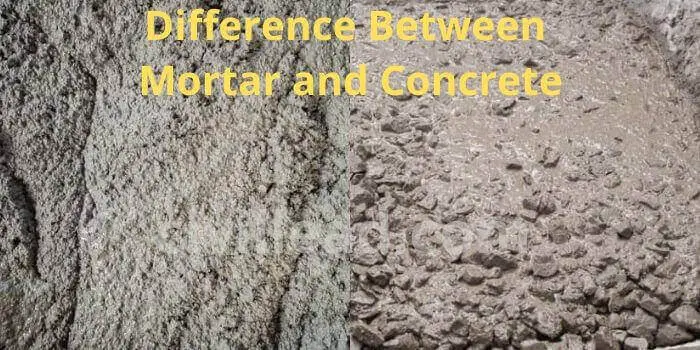Mortar and concrete are the most commonly used materials in construction engineering. Mortar, composed of cement, sand, and water, bonds bricks and blocks together during construction. Concrete comprises cement, aggregate (stone or gravel), and water. Both mortar and concrete have been used in construction for centuries, significantly advancing the capabilities of modern architecture.
Mortar has many uses in building construction. It can fill gaps between bricks or block pieces, form bond beams to reinforce walls and foundations, waterproof the structure by blocking water penetration within the masonry wall system, and form arches or vaults with its structural strength alone. In addition to these structural roles, mortar protects against fire damage by providing an insulative barrier between masonry materials and creating an even surface for painting or other finishes.

Concrete is a versatile material used structurally and aesthetically depending on the project’s needs. Structurally, it can be used for foundations to support buildings, walls, and columns to provide stability. It is beneficial when constructing large structures such as bridges or dams, and its high compressive strength makes it ideal for withstanding heavy loads. Aesthetically, it can be cast into any shape desired when forming stairs or railings, which adds a decorative element to any building project.
The combination of mortar and concrete provides a powerful tool that allows engineers to construct virtually any structure imaginable while meeting safety requirements and aesthetic demands. As long as both components are mixed correctly according to their instructions, they will work together harmoniously, enabling all sorts of complex shapes and designs without sacrificing functionality or durability. Thus making them a cornerstone material in modern civil engineering projects today.
Can I use mortar mix instead of concrete?
Mortar can not replace concrete in works where it is necessary to achieve strength. However, you can use mortar mix instead of concrete in plastering works to hide the joints and to improve appearance, to give a soft, even bed between layers of stone or brick masonry, to fill up the spaces between stones or bricks for making walls tight, in concrete as a significant matrix, for ornamental purposes or molding.
Mortar and concrete are two of the most commonly used construction materials, but they are different. Mortar mix combines sand, cement, lime, and water, while concrete is a mixture of gravel, sand, Portland cement, and water. Both materials offer advantages for different construction tasks; however, mortar is not a suitable substitute for concrete in all cases.
When it comes to plastering works, such as hiding joints or providing an even bed between layers of stone or brick masonry, mortar mix can be an excellent solution. Unlike concrete, which contains large aggregates like gravel or crushed stones that won’t fit into narrow spaces and cause uneven surfaces, the finely ground material in mortar mix can quickly fill acceptable gaps and provide uniform surfaces.
Mortar works particularly well when filling joints between stones or bricks to tighten walls. It also adds significant matrix strength to the overall construction as it acts as an adhesive and increases the bond strength between masonry units. Furthermore, its flexibility makes it ideal for ornamental purposes or molding shapes around windows and doors that require intricate details.
However, mortar cannot replace concrete in cases where strength is required, such as footings and foundations. Since mortar lacks aggregate particles that give power to the mixture, it has limited compressive strength compared to concrete, making it unsuitable for structural applications that need extra load-bearing capacity. Proper concrete mixtures will be necessary to ensure appropriate structural stability over time.
In conclusion, both materials are widely used in various construction projects; mortar mix provides excellent aesthetic value and adhesion properties when used correctly but cannot replace traditional concrete when building strong structures requiring extra support due to its lack of load-bearing capacity as such proper consideration must be given regarding which material should be used depending on the project at hand to achieve desired results over time with minimal maintenance costs involved.




